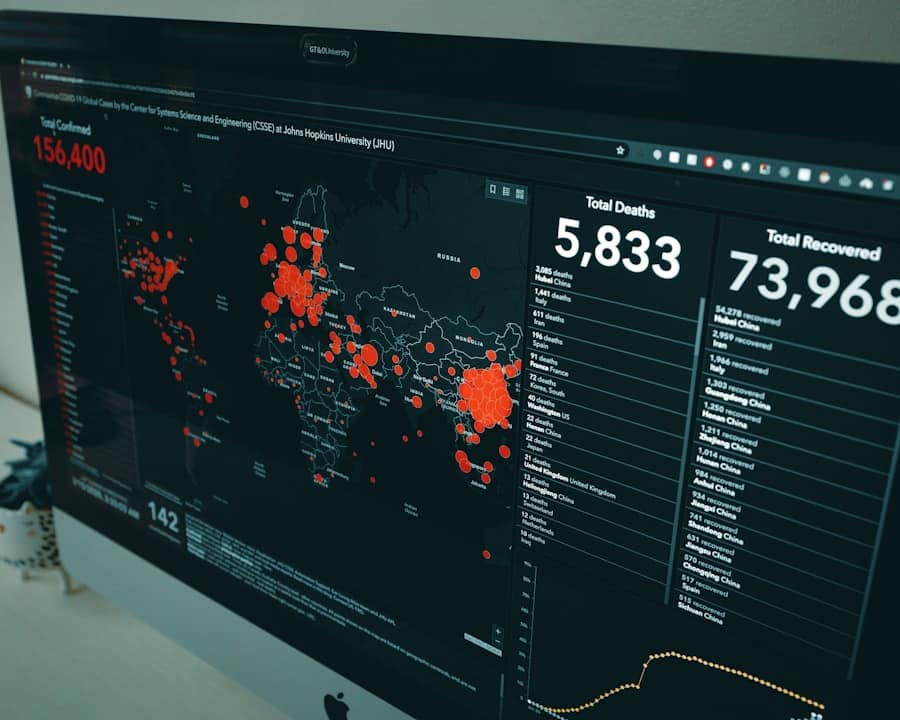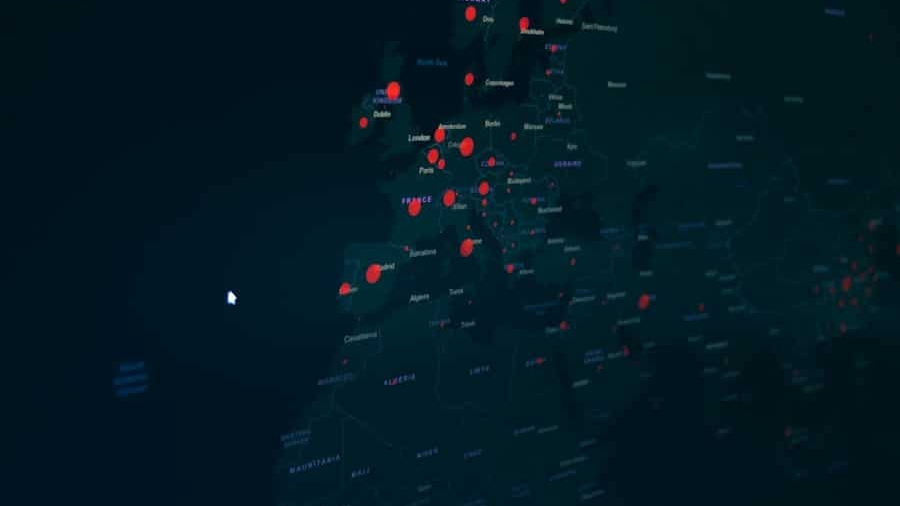The rapid evolution of technology has brought about unprecedented advancements in various fields, and cybersecurity is no exception. As organizations increasingly rely on digital infrastructures, the need for robust security measures has become paramount. Cyber threats are growing in sophistication and frequency, making traditional security measures inadequate.
In this context, artificial intelligence (AI) has emerged as a transformative force in cybersecurity, particularly in real-time threat detection. By leveraging machine learning algorithms and data analytics, AI systems can analyze vast amounts of data at speeds unattainable by human analysts, enabling organizations to identify and respond to threats more effectively. AI’s integration into cybersecurity is not merely a trend; it represents a fundamental shift in how organizations approach security.
The complexity of modern cyber threats necessitates a proactive rather than reactive stance. AI technologies can continuously monitor network traffic, user behavior, and system vulnerabilities, providing a dynamic defense mechanism that adapts to evolving threats. This capability is crucial in an era where cybercriminals employ advanced tactics such as polymorphic malware and sophisticated phishing schemes.
Key Takeaways
- AI plays a crucial role in enhancing cybersecurity by enabling real-time threat detection and response.
- Real-time threat detection poses challenges due to the increasing volume and complexity of cyber threats.
- AI helps in real-time threat detection by analyzing large volumes of data, identifying patterns, and detecting anomalies.
- Machine learning and AI algorithms are used to improve the accuracy and speed of real-time threat detection.
- The benefits of AI in real-time threat detection include improved accuracy, faster response times, and the ability to handle large volumes of data efficiently.
Real-Time Threat Detection Challenges
The landscape of cybersecurity is fraught with challenges, particularly when it comes to real-time threat detection. One of the primary obstacles is the sheer volume of data generated by modern networks. Organizations today process terabytes of data daily, encompassing everything from user activity logs to system alerts.
Sifting through this vast amount of information to identify potential threats is a daunting task for human analysts, who may struggle to keep pace with the speed at which cyber threats can emerge. This challenge is compounded by the fact that many attacks are designed to evade detection, employing techniques that obscure their presence until significant damage has been done. Another significant challenge lies in the diversity of threats that organizations face.
Cybercriminals employ a wide array of tactics, from ransomware attacks that encrypt critical data to insider threats that exploit legitimate access to systems. Each type of threat requires a different detection approach, making it difficult for traditional security systems to provide comprehensive coverage. Furthermore, the increasing use of cloud services and remote work arrangements has expanded the attack surface, introducing new vulnerabilities that must be monitored in real time.
As organizations strive to protect their assets, the complexity and variability of these threats necessitate innovative solutions that can adapt to an ever-changing environment.
The Role of AI in Real-Time Threat Detection

AI plays a pivotal role in addressing the challenges associated with real-time threat detection by automating and enhancing the analytical processes involved in identifying potential security incidents. By utilizing machine learning algorithms, AI systems can learn from historical data and recognize patterns indicative of malicious activity. This capability allows for the identification of anomalies that may signal a breach or an attempted attack, enabling organizations to respond swiftly before significant damage occurs.
The ability to analyze data in real time means that AI can detect threats as they happen, rather than after the fact, which is crucial for minimizing the impact of cyber incidents. Moreover, AI’s capacity for continuous learning means that it can adapt to new threats as they emerge. Traditional security systems often rely on predefined rules and signatures to identify threats, which can become outdated as attackers evolve their tactics.
In contrast, AI systems can update their models based on new data inputs, ensuring that they remain effective against the latest threats. This adaptability is particularly important in a landscape where cybercriminals are constantly developing new methods to bypass security measures. By integrating AI into their cybersecurity frameworks, organizations can enhance their resilience against attacks and improve their overall security posture.
Machine Learning and AI Algorithms for Real-Time Threat Detection
At the heart of AI’s effectiveness in real-time threat detection are machine learning algorithms that enable systems to process and analyze data efficiently. Supervised learning algorithms, for instance, are trained on labeled datasets containing examples of both benign and malicious activities. By learning from these examples, the algorithms can classify new data points and identify potential threats based on learned patterns.
Techniques such as decision trees, support vector machines, and neural networks are commonly employed in this context, each offering unique advantages depending on the specific application. Unsupervised learning algorithms also play a crucial role in threat detection by identifying anomalies without prior labeling of data. These algorithms analyze data sets to find patterns or clusters that deviate from normal behavior, which may indicate a security incident.
For example, clustering algorithms like k-means or hierarchical clustering can group similar data points together, allowing security teams to focus on outliers that warrant further investigation. Additionally, reinforcement learning techniques are being explored for their potential to optimize response strategies based on feedback from previous actions taken during security incidents. The combination of these various machine learning approaches enhances the ability of AI systems to detect threats in real time effectively.
Benefits of AI in Real-Time Threat Detection
The integration of AI into real-time threat detection offers numerous benefits that significantly enhance an organization’s cybersecurity capabilities. One of the most notable advantages is the speed at which AI systems can analyze data and identify potential threats. Traditional methods often involve manual analysis by security personnel, which can be time-consuming and prone to human error.
In contrast, AI can process vast amounts of information within seconds, allowing for immediate identification and response to potential incidents. This rapid response capability is essential in mitigating damage and reducing the window of opportunity for attackers. Another key benefit is the reduction of false positives that often plague traditional security systems.
Many conventional approaches rely on signature-based detection methods that can generate numerous alerts for benign activities mistakenly identified as threats. AI-driven systems utilize advanced algorithms that improve accuracy by learning from historical data and refining their detection capabilities over time. This leads to more precise threat identification and allows security teams to focus their efforts on genuine risks rather than wasting resources on false alarms.
Consequently, organizations can allocate their cybersecurity resources more effectively, enhancing overall operational efficiency.
Limitations and Challenges of AI in Real-Time Threat Detection

Despite its many advantages, the application of AI in real-time threat detection is not without limitations and challenges. One significant concern is the reliance on high-quality data for training machine learning models. If the training data is biased or incomplete, it can lead to inaccurate predictions and missed detections.
For instance, if an AI system is trained primarily on data from one type of network environment, it may struggle to adapt when deployed in a different context with unique characteristics and threat profiles. Additionally, there is the challenge of interpretability in AI decision-making processes. Many machine learning models operate as “black boxes,” meaning that their internal workings are not easily understood by human analysts.
In cybersecurity, where accountability is crucial, understanding the rationale behind threat detections is essential for building trust among stakeholders and ensuring compliance with regulatory requirements.
Case Studies of AI Assisting in Real-Time Threat Detection
Several organizations have successfully implemented AI-driven solutions for real-time threat detection, showcasing the technology’s effectiveness in combating cyber threats. One notable example is Darktrace, a cybersecurity firm that utilizes machine learning algorithms to detect anomalies within network traffic. Darktrace’s Enterprise Immune System mimics the human immune system by continuously monitoring network behavior and identifying deviations from established norms.
In one case study, Darktrace was able to detect a sophisticated insider threat within minutes by recognizing unusual patterns of data access that deviated from an employee’s typical behavior. Another compelling case study involves IBM’s Watson for Cyber Security, which leverages natural language processing and machine learning to analyze vast amounts of unstructured data from various sources, including threat intelligence feeds and security blogs. By correlating this information with an organization’s existing security data, Watson can provide actionable insights and recommendations for mitigating potential threats.
In one instance, Watson helped a financial institution identify a previously unknown vulnerability within its systems by analyzing patterns across multiple datasets, ultimately preventing a potential breach.
The Future of AI in Real-Time Cybersecurity Threat Detection
Looking ahead, the future of AI in real-time cybersecurity threat detection appears promising as technology continues to advance at an unprecedented pace. One emerging trend is the increasing integration of AI with other technologies such as blockchain and quantum computing. Blockchain’s decentralized nature could enhance data integrity and trustworthiness in AI-driven systems, while quantum computing holds the potential to revolutionize encryption methods and improve threat detection capabilities.
Moreover, as cyber threats become more sophisticated, there will be a growing emphasis on developing hybrid models that combine human expertise with AI capabilities. While AI excels at processing large volumes of data quickly, human analysts bring contextual understanding and critical thinking skills that are essential for effective decision-making in complex situations. The collaboration between humans and machines will likely lead to more robust cybersecurity strategies that leverage the strengths of both parties.
As organizations continue to navigate an increasingly complex digital landscape, investing in AI-driven solutions for real-time threat detection will be crucial for maintaining security resilience. The ongoing development of advanced algorithms and machine learning techniques will further enhance the ability to detect emerging threats proactively while minimizing false positives and improving response times. Ultimately, the future of cybersecurity will be defined by how effectively organizations harness the power of AI to protect their digital assets against an ever-evolving array of cyber threats.
A related article discussing the top trends on LinkedIn for 2023 can provide valuable insights into the evolving landscape of cybersecurity and technology. As AI continues to play a crucial role in real-time cybersecurity threat detection, understanding the latest trends in the industry can help organizations stay ahead of potential threats. To learn more about the top trends on LinkedIn for 2023, check out the article here.
FAQs
What is AI in the context of cybersecurity threat detection?
AI, or artificial intelligence, refers to the use of computer systems to perform tasks that normally require human intelligence, such as visual perception, speech recognition, decision-making, and language translation. In the context of cybersecurity threat detection, AI is used to analyze large amounts of data and identify patterns and anomalies that may indicate a potential security threat.
How is AI being used to assist in real-time cybersecurity threat detection?
AI is being used to assist in real-time cybersecurity threat detection by analyzing network traffic, user behavior, and system logs to identify potential security threats. AI algorithms can detect patterns and anomalies that may indicate a security breach, and can alert security teams to take action to mitigate the threat.
What are the benefits of using AI for real-time cybersecurity threat detection?
Using AI for real-time cybersecurity threat detection has several benefits, including the ability to analyze large amounts of data quickly and accurately, the ability to detect and respond to security threats in real time, and the ability to adapt to new and evolving threats. AI can also help reduce the workload on human security analysts by automating routine tasks and flagging potential threats for further investigation.
What are some examples of AI technologies used in real-time cybersecurity threat detection?
Some examples of AI technologies used in real-time cybersecurity threat detection include machine learning algorithms, which can analyze large amounts of data to identify patterns and anomalies, and natural language processing algorithms, which can analyze text data to identify potential security threats. Other AI technologies used in cybersecurity threat detection include anomaly detection algorithms, which can identify unusual behavior that may indicate a security breach, and predictive analytics, which can forecast potential security threats based on historical data.
What are the limitations of using AI for real-time cybersecurity threat detection?
While AI can be a powerful tool for real-time cybersecurity threat detection, it is not without its limitations. AI algorithms may produce false positives, flagging normal behavior as a potential security threat, and may also miss certain types of sophisticated or targeted attacks. Additionally, AI algorithms may be vulnerable to adversarial attacks, where an attacker deliberately manipulates data to evade detection. It is important for organizations to use AI as part of a comprehensive cybersecurity strategy that also includes human expertise and other security technologies.

